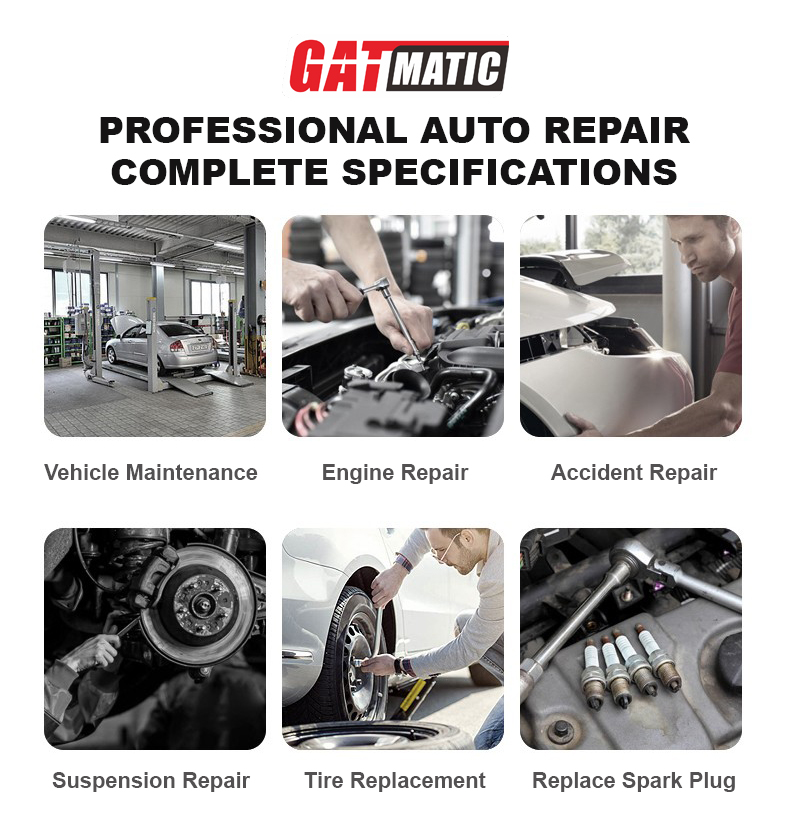How do I prevent over-tightening a bolt with a socket wrench?
In the realm of mechanical applications, the proper tightening of bolts is crucial for ensuring structural integrity, safety, and optimal performance. However, the risk of over-tightening poses a serious threat to the stability of assemblies and can lead to a myriad of issues. This essay explores the key considerations and practices to prevent over-tightening when using a socket wrench.
I. Understanding Torque
Torque, the rotational force applied to a bolt, plays a pivotal role in achieving the right level of tightness. Manufacturers provide torque specifications for different bolts, and it is imperative to adhere to these guidelines. Failure to do so can result in structural damage, stripped threads, or even the shearing of bolts.
II. Choosing the Right Socket Wrench
Selecting an appropriate socket wrench is the first step in preventing over-tightening. Ensuring the right size and compatibility with the bolt head are essential. Moreover, the quality of the socket wrench itself is a crucial factor. Investing in a high-quality tool reduces the likelihood of imprecise torque application.
III. Use of Torque Wrench
The torque wrench emerges as a valuable tool for preventing over-tightening. This specialized wrench allows users to set the desired torque level accurately. Gradual tightening is key, as it ensures a controlled application of force, reducing the risk of surpassing the specified torque limits.
IV. Hand-Tightening Before Using a Socket Wrench
Before employing a socket wrench, it is advisable to perform initial hand-tightening. This not only aligns the threads but also reduces the chances of cross-threading, which can compromise the structural integrity of the assembly. Hand-tightening sets the foundation for precise torque application.
V. Paying Attention to Material and Lubrication
The material of both the bolt and nut must be considered when determining torque values. Lubrication is also crucial, especially in applications where friction could affect torque readings. Understanding these factors contributes to accurate torque application and prevents over-tightening.
VI. Being Mindful of the Bolt’s Condition
Regular inspections of bolts and nuts are essential. Damaged threads compromise the effectiveness of torque application. It is crucial to replace damaged bolts promptly and inspect the condition of the socket wrench to ensure optimal performance and safety.
VII. Monitoring the Torque Application
Continual monitoring of torque levels is essential. Using torque-angle methods, when applicable, adds an extra layer of precision. Double-checking the torque after a settling period ensures that any changes in the assembly have been accounted for, preventing unexpected failures.
VIII. Training and Awareness
Education is a key component of preventing over-tightening. Personnel should be well-versed in proper tightening procedures and regularly undergo training sessions on torque application. Fostering a culture of precision and safety within the workplace is vital for overall operational excellence.
Conclusion
In conclusion, preventing over-tightening of bolts with a socket wrench requires a combination of factors, including the understanding of torque, selecting the right tools, and fostering a culture of precision. By adhering to manufacturer guidelines, using quality tools, and maintaining a proactive approach to bolt tightening, individuals can contribute to the longevity, safety, and reliability of mechanical assemblies.
FAQs
1. Why is preventing over-tightening important in bolt applications?
Over-tightening can lead to structural damage, stripped threads, and compromised integrity, impacting the safety and performance of assemblies.
2. What is torque, and why is it crucial in bolt tightening?
Torque is the rotational force applied to a bolt. It’s essential for achieving the right level of tightness, preventing under-tightening or over-tightening, which can lead to various issues.
3. How do I choose the right socket wrench for a specific bolt?
Consider the size and compatibility with the bolt head. Additionally, invest in a high-quality socket wrench to ensure accurate torque application and reduce the risk of over-tightening.
4. Why is a torque wrench recommended for bolt tightening?
A torque wrench allows precise control over the applied force, helping to achieve the specified torque without over-tightening, which is especially crucial in applications where accuracy is paramount.
5. Is hand-tightening necessary before using a socket wrench?
Yes, hand-tightening is essential to align threads and reduce the risk of cross-threading, laying the foundation for controlled torque application with the socket wrench.
Describe Your Needs In Detail!
We will carefully evaluate your needs and give professional solutions.



